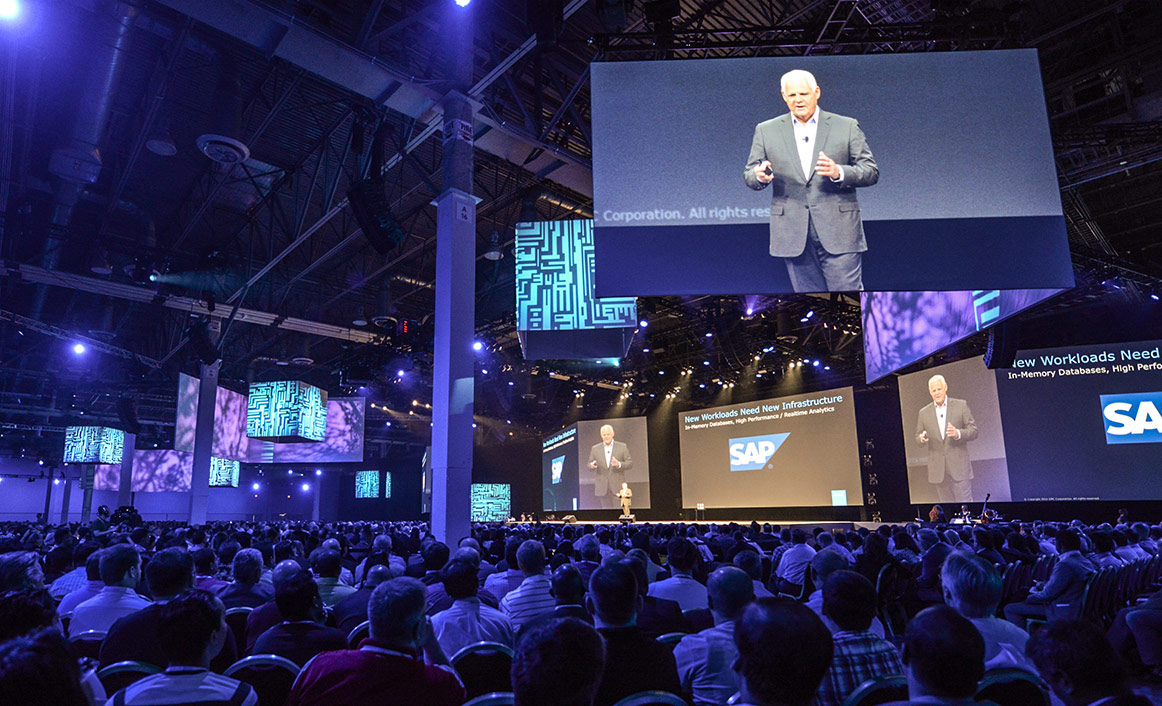
EMC World has been full of announcements and not all of them have come from EMC. The federation of companies that EMC has created and its extensive partner community has seen a number of releases.
CBR highlights some of the biggest non-EMC product announcements from the conference along with the latest releases from EMC.
1. Brocade
Brocade revealed that its Gen 6 Fibre Channel and IP Storage networking technologies are some of the foundation elements of EMC’s Unity solution.
Unity, which is aimed at the midrange market, is using Brocade technologies to help provide an easy to deploy network foundation between servers and EMC Unity all-flash and hybrid storage. The idea behind this is to remove bottlenecks for high-transaction workloads in flash based arrays.
"Flash is fundamentally changing the requirements for the network in the modern data center," said Jack Rondoni, VP of storage networking, Brocade.
2. Neutrino Nodes
The newly-updated VCE VxRack System 1000 will utilise Neutrino Nodes to make it easier for customers to deploy cloud-native IaaS solutions.
This latest offering is basically made to help simplify cloud with the hardware-software for the VxRack platform. It is capable of running any workload on any node in the rack, and on several different cloud software stacks.
For example, OpenStack can be used for one job, Hadoop for another and VMware photon for a third application, and each can run of the appropriate stack as long as there is capacity somewhere in the stack.
The VxRacks with Neutrino Nodes and OpenStack support will be available from the third quarter, while Photon and Hadoop support will come next year. The price for the system starts at $300,000.
3. Virtual Instruments
The company which aims to improve the performance and availability of mission-critical applications debuted the beta of its cloud based workload analysis service.
Called WorkloadCentral, it is designed to help IT to better understand how their application workloads interact with the underlying storage infrastructure.
The purpose of this is to fully optimise the infrastructure environment to make sure that applications run at their best.
"WorkloadCentral gives IT architects access to the blueprints, tools and analytics needed to become true workload experts," said Tim Van Ash, senior vice president of products at Virtual Instruments.
"As the community grows, vendors, customers and channel partners alike can understand workloads at a deeper level and make data-driven decisions that will align storage deployments to workload performance requirements."
Virtual Instruments, which recently merged with Load Dynamix, is offering WorkloadCentral as a free cloud-based community tool.
4. Native hybrid cloud
Native hybrid cloud is the latest edition to EMCs cloud portfolio, and it is described as a turnkey platform for cloud-native application development and deployment.
Available as a fully integrated and engineered platform, NHC is designed to help the enterprise to innovate and scale faster, the company said.
NHC takes advantage of the Pivotal Cloud Foundry platform and VMware’s IaaS and cloud offerings as well as offering a choice of on-premises infrastructure based on VMware vSphere, OpenStack and VMware Photon Platform.
Customers who want an off-premise IaaS option will be able to choose from the likes of AWS, Microsoft Azure, Virtustream and more.
James Watters, SVP of Products, Pivotal said: "With Pivotal Cloud Foundry tightly integrated into Native Hybrid Cloud, developers now can drastically shorten the application development and deployment lifecycle and operators can manage thousands of apps with far fewer people.
"An idea for an application on Monday can be running in production by Friday. This is the cloud-native way and it’s transforming how the world builds and runs software."
5. DSSD D5
EMC introduced the DSSD offering earlier in the year but the company took advantage of its show to reveal key system enhancements.
The major enhancement is the ability to stripe two systems together in a single rack to double the IOPS, bandwidth and capacity.
The company said that DSSD is a key building block for the modern data centre as it helps to accelerate the performance of traditional databases and data warehouses, but it can also help to meet challenges posed by running real-time analytics that requires a high amount of performance.
EMC, which has declared that 2016 is the year of all-flash, has set about transforming its portfolio to ship all-flash configurations.
The ability to stripe two D5 systems together with high performance databases in a single rack is said to offer one-third the latency and offer a lower total cost of ownership than the fastest solution for databases on the market, the company claim.






